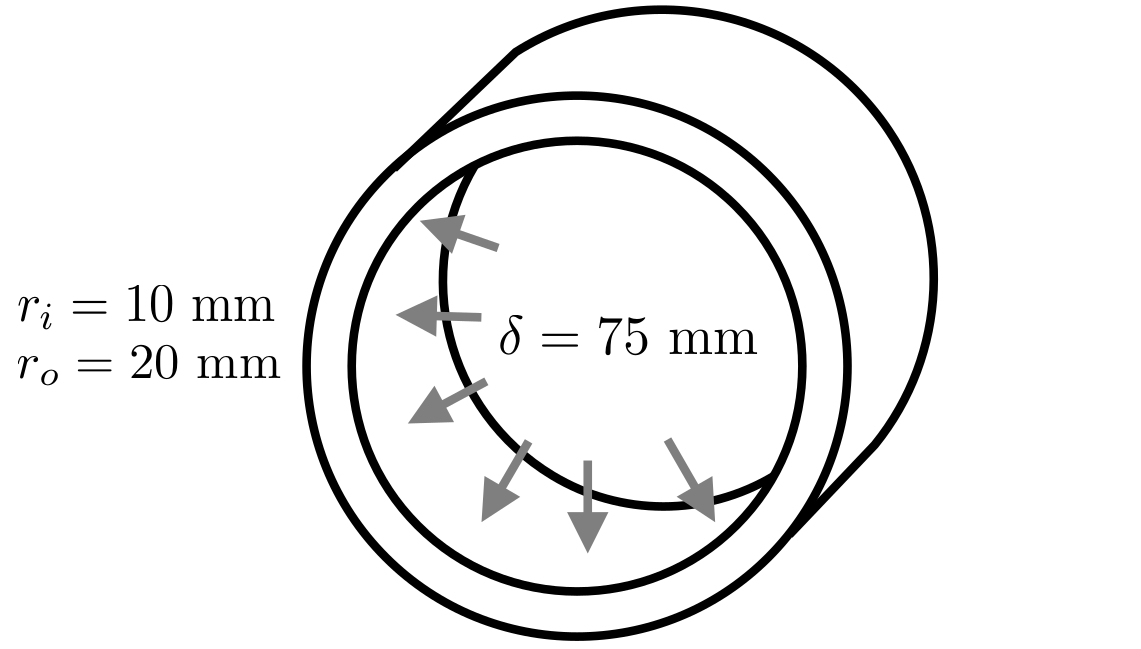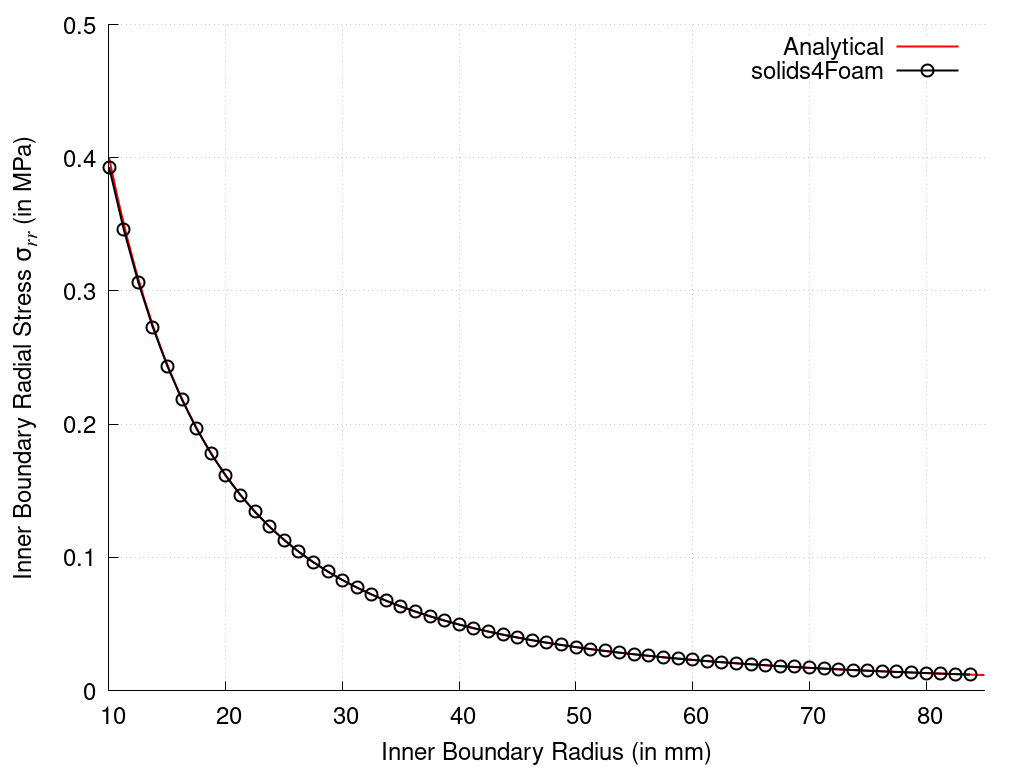Expansion of Thick-Walled Cylinder: cylinderExpansion
Prepared by Philip Cardiff and Ivan Batistić
Tutorial Aims
- Check solver accuracy for large-strain elastoplasticity using an available analytical solution.
Case Overview
In this case, which has been analysed in Cardiff et al. [1], a thick-walled cylinder with an inner radius \(r_i\) of \(10\) mm and an outer radius \(r_o\) of \(20\) mm is subjected to internal expansion (Figure 1). The mechanical properties (Table 1) are chosen to approximate rigid plastic behaviour, allowing comparison with an analytical solution. The inner radius is displaced by \(75\) mm in the radial direction, driving the inner cylinder radius to a final value of \(85\) mm. A zero traction condition is applied to the outer cylinder boundary. Inertial and body forces are neglected, and the problem is solved using a 1-D axisymmetric mesh consisting of \(10\) CVs in the radial direction.


Table 1: Mechanical properties
| Parameter | Symbol | Value |
|---|---|---|
| Shear modulus | \(\mu\) | \(3.8\) GPa |
| Bulk modulus | \(\kappa\) | \(40\) GPa |
| Yield stress | \(\sigma_Y\) | \(0.5\) MPa |
| Hardening parameter | - | \(0\) |
Expected Results
Assuming rigid plasticity, the radial (Cauchy) stress, \(\sigma_{rr}\) , at the inner surface is given analytically as [2, 3]:
\[\sigma_{rr}=\left(\dfrac{\sigma_Y}{\sqrt{3}}\right) \ln \left( \dfrac{\left(\dfrac{r_0}{a_0}\right)^2+\left(\dfrac{a}{a_0}\right)^2-1}{\left(\dfrac{b_0}{a_0}\right)^2 + \left(\dfrac{a}{a_0}\right)^2 -1} \right)\]where \(a_0\) is the initial inner radius, \(b_0\) is the initial outer radius, \(r_0\) is the radius in the initial configuration of the material point at which the stresses are being calculated, and \(a\) is the current value of the inside radius. The hoop and axial stresses are offset from the radial stress by a constant value; consequently, only the radial stress is examined.
A comparison between numerical and analytical solutions is shown in Figure 2, where one can see the plot of the radial (Cauchy) stress at the inner boundary versus the current inner radius. The plot is automatically generated using plot.gnuplot script when running the case using the Allrun script.

Running the Case
The tutorial case is located at solids4foam/tutorials/solids/elastoplasticity/cylinderExpansion. The case can be run using the included Allrun script, i.e. > ./Allrun. The Allrun script first creates the blockMeshDict file using the m4 scripting language from the blockMeshDict.m4 file located in the system directory. Afterwards, blockMesh (> blockMesh) is used to create the mesh and the solids4foam solver is used to run the case (> solids4Foam). Optionally, if gnuplot is installed, the evolution of radial stress vs inner radius displacement is plotted in the plot.pdf file.
References
[2] W. Prager and P. G. Hodge. Theory of Perfectly Plastic Solids. John Wiley and Sons, 1951.
[3] Dassault Systémes Simulia Corp. Abaqus 6.11 documentation. http://www.simulia.com/products/abaqus_fea.html, 2012.